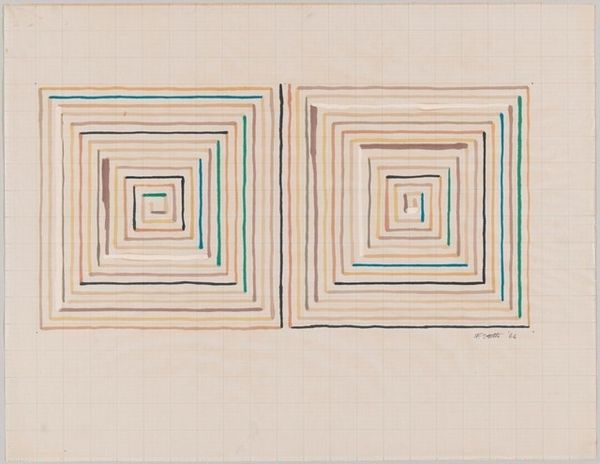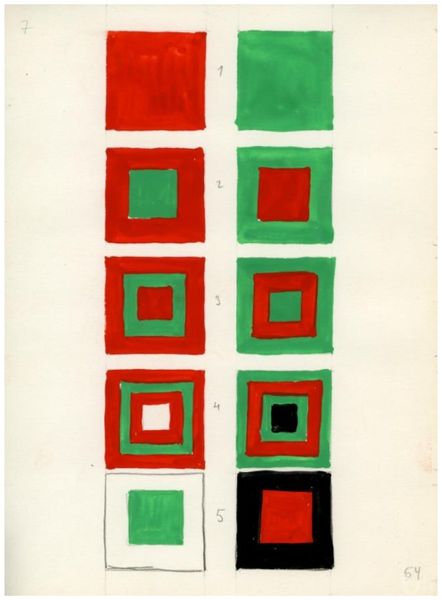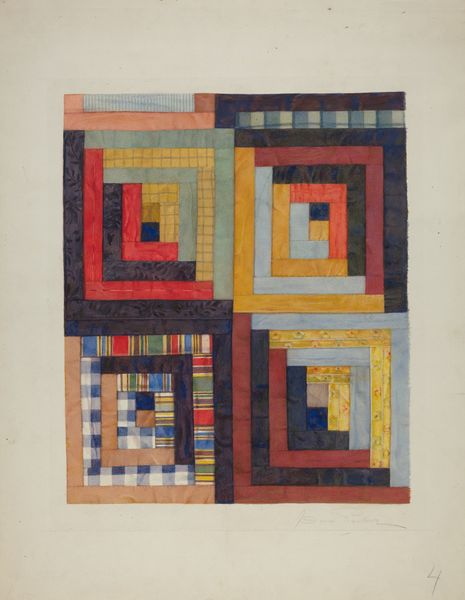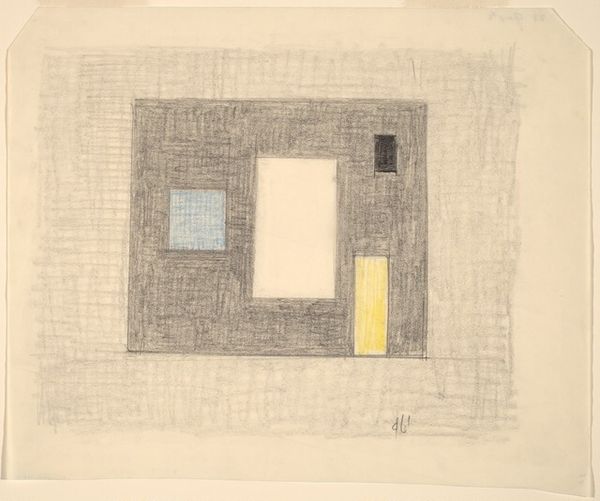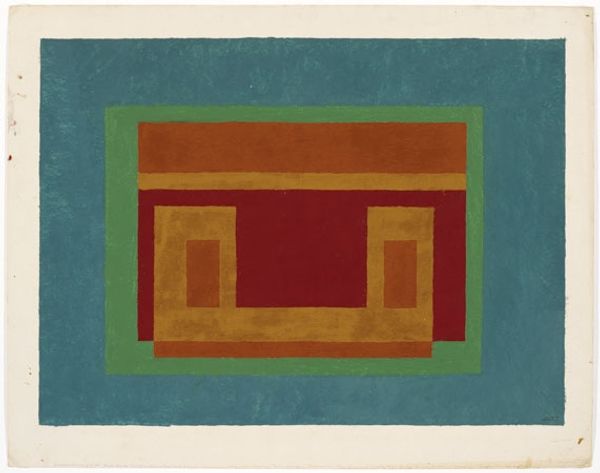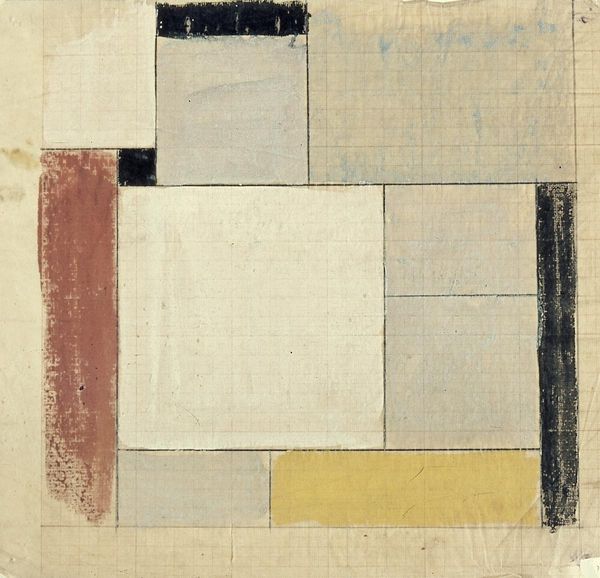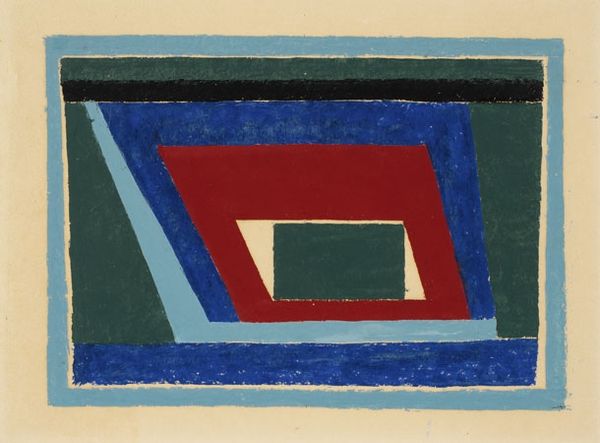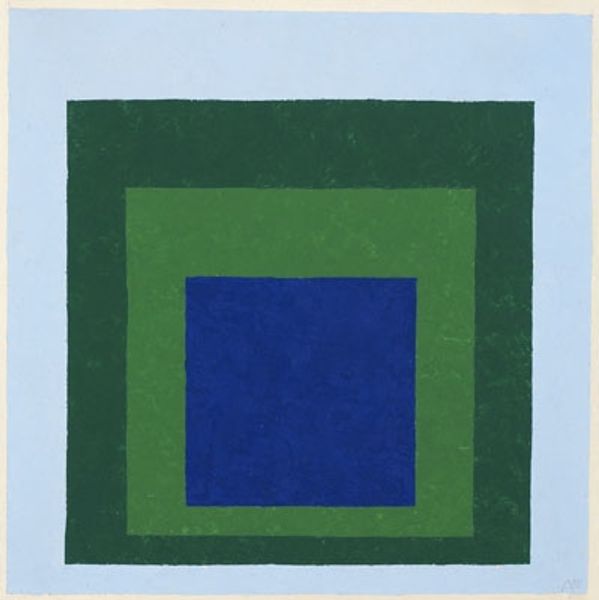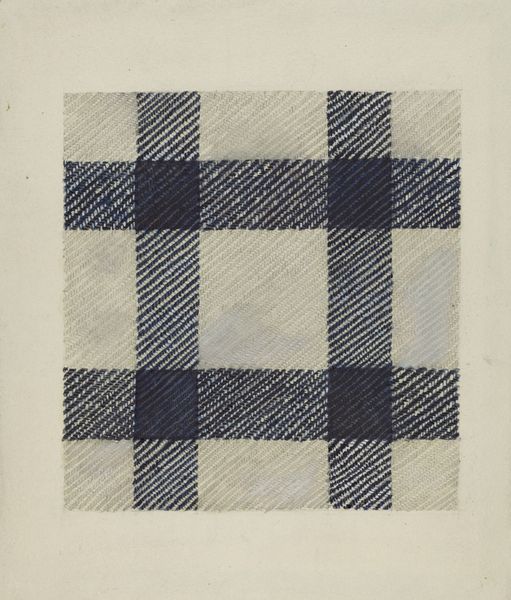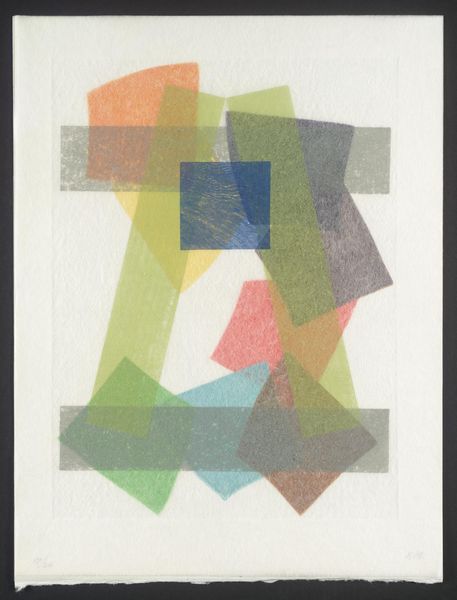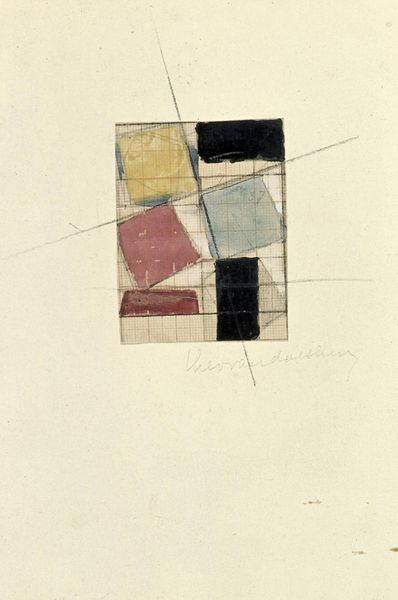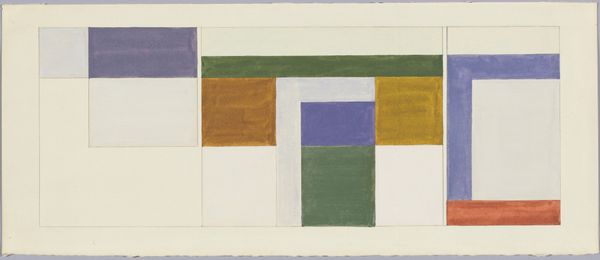
drawing, watercolor
#
drawing
#
form
#
watercolor
#
geometric
#
abstraction
#
line
#
watercolor
Dimensions: overall: 29.5 x 30.3 cm (11 5/8 x 11 15/16 in.)
Copyright: National Gallery of Art: CC0 1.0
Curator: Here we have Josef Hoffmann's "Geometric Design (Square Forms)," a drawing that beautifully exemplifies his exploration of abstraction. Editor: My first thought is how meticulously crafted it appears, despite its somewhat muted palette. I can see the underlying grid—what's the medium here? Watercolor? It looks almost like a blueprint. Curator: It is indeed watercolor, and also drawing. The grid underneath suggests the work's grounding in functionality. Hoffman was a central figure in the Wiener Werkstätte, and this design sensibility—melding artistry with everyday utility—is distinctly palpable. The Wiener Werkstätte aimed to create total works of art, integrating all aspects of life from architecture to furniture. Editor: Precisely, and observing how the squares interlock, almost modularly, really screams applied design. I'm drawn to the materiality here – how the watery translucence of the watercolor contrasts with the rigidity implied by the geometric composition. What strikes me as particularly compelling is this negotiation of the "handmade" and the mechanical in what ostensibly appears to be a production draft, further complicated by its inherent aesthetic choices. Curator: Absolutely. The limitations imposed by the grid structure and even the modest watercolor medium, I would argue, pushed Hoffman to test these limitations. This work feels emblematic of early 20th century tensions – the drive toward functional abstraction amid lingering handcraft traditions. We see how these abstract forms find resonance, becoming part of the very fabric of modern life. Editor: Yes, the simplicity, almost restraint of materials is fascinating, making one reflect on accessibility. Consider what someone using similar modest supplies could accomplish, too. Ultimately this makes me wonder if these square forms are perhaps symbols of some larger ideological structure? The intersection of aesthetics, design and industry raises poignant questions concerning the nature and the role of craft in increasingly industrialized societies. Curator: An excellent point to ponder - how design serves as a subtle form of political expression. This little drawing encourages deeper engagement with some really significant cultural questions. Editor: A remarkable achievement for a study of square forms done in watercolor on a humble grid.
Comments
No comments
Be the first to comment and join the conversation on the ultimate creative platform.
